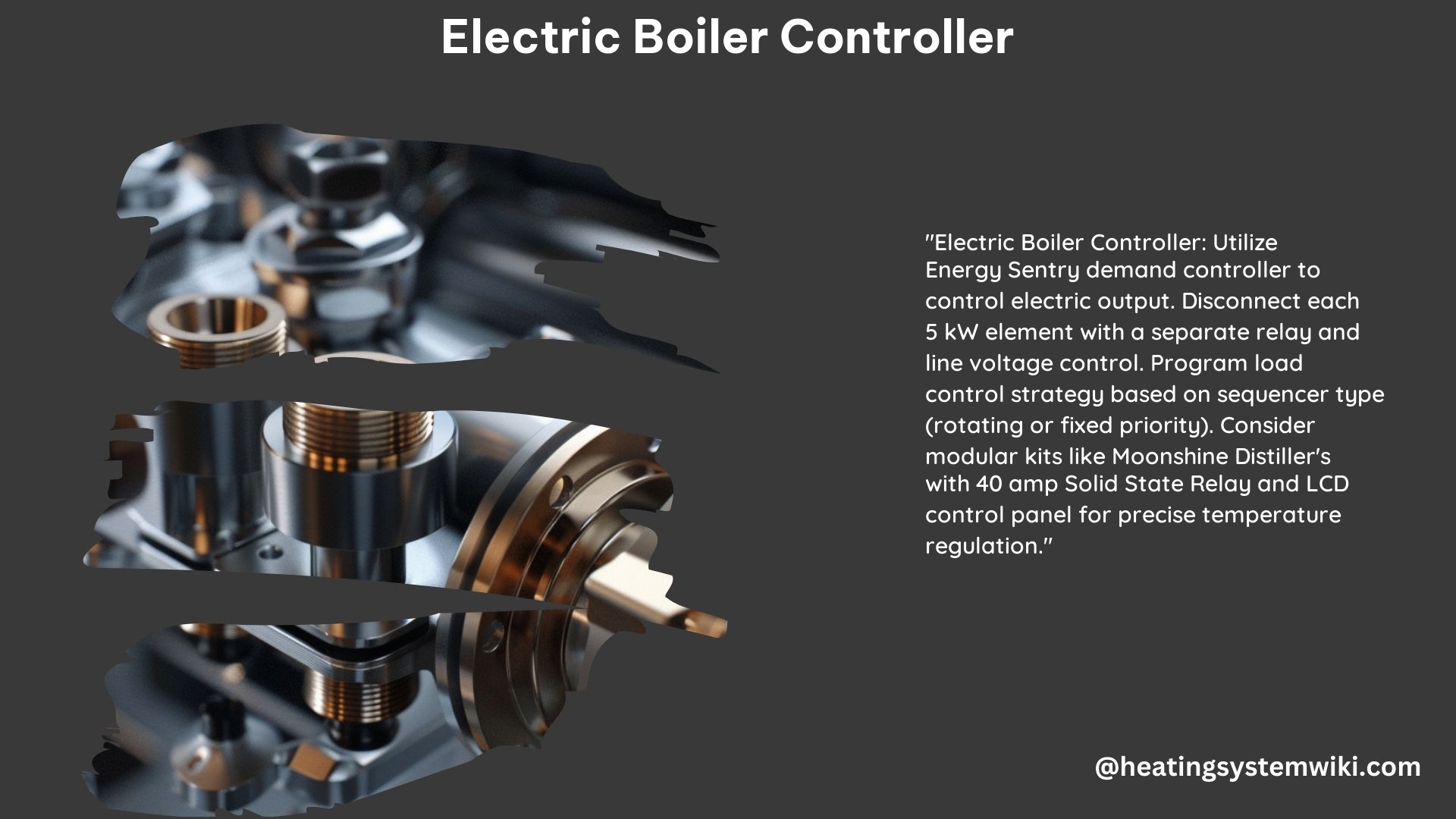An electric boiler controller is a critical component that ensures the efficient and safe operation of an electric boiler. This comprehensive guide delves into the intricacies of electric boiler controllers, covering their function, signs of malfunction, and technical specifications to provide a thorough understanding for DIY enthusiasts and professionals alike.
How Does an Electric Boiler Controller Work?
The electric boiler controller regulates the heating elements within the boiler, ensuring that the water reaches and maintains the desired temperature. At the heart of the controller is a microprocessor that continuously monitors the water temperature using various sensors. Based on the input from these sensors, the controller adjusts the power supplied to the heating elements, enabling precise temperature control.
The controller’s functionality extends beyond temperature regulation. It can also integrate with smart home systems, allowing for remote monitoring and control of the boiler’s operation. This integration enables homeowners to adjust the boiler’s settings, monitor energy consumption, and receive alerts in case of any issues, all from the convenience of their smartphones or other connected devices.
Signs of a Malfunctioning Electric Boiler Controller

Recognizing the signs of a faulty electric boiler controller is crucial for timely intervention and prevention of further damage. Here are some common indicators that the controller may be experiencing issues:
- Inconsistent Water Temperature: If the water temperature fluctuates significantly or fails to reach the desired setpoint, it could be a sign of a malfunctioning controller.
- Frequent or Unusual Cycling: Observe the boiler’s on-and-off cycles. If the boiler is turning on and off more frequently than normal or at unexpected intervals, it may indicate a problem with the controller.
- Error Codes or Alarms: Many modern electric boiler controllers feature digital displays that provide error codes or alarm messages when a problem is detected. Carefully monitoring these notifications can help identify the root cause of the issue.
- Physical Damage: Visible signs of physical damage, such as burn marks, cracks, or broken components, can be a clear indication of a faulty controller.
Common Causes of Electric Boiler Controller Malfunctions
Understanding the potential causes of electric boiler controller malfunctions is crucial for effective troubleshooting and repair. Some of the most common culprits include:
- Sensor Failure: The temperature sensors used by the controller to monitor the water temperature can become faulty over time, leading to inaccurate readings and improper control of the heating elements.
- Electrical Issues: Problems with the electrical connections, wiring, or power supply can disrupt the controller’s ability to function correctly, causing it to malfunction.
- Software or Firmware Issues: Outdated or corrupted software or firmware within the controller can lead to various operational problems, including erratic behavior or complete failure.
- Physical Damage: Physical damage to the controller or its components, such as from water exposure, impact, or extreme temperatures, can compromise the controller’s integrity and cause it to malfunction.
Technical Specifications of Electric Boiler Controllers
When selecting or replacing an electric boiler controller, it’s essential to consider the following technical specifications to ensure compatibility and optimal performance:
- Power Rating: The power rating of the controller must match the power requirements of the electric boiler. Mismatched power ratings can lead to compatibility issues and potential safety hazards.
- Temperature Range: The controller should be capable of handling the desired temperature range of the boiler, typically ranging from 32°F (0°C) to 212°F (100°C) or higher, depending on the boiler’s design.
- Sensor Compatibility: The controller must be compatible with the specific temperature sensors used in the electric boiler, ensuring accurate temperature monitoring and control.
- Communication Protocols: For integration with smart home systems or remote monitoring, the controller should support the necessary communication protocols, such as Wi-Fi, Bluetooth, or Ethernet.
DIY Solutions and Recommendations
For homeowners interested in taking a more hands-on approach to their electric boiler’s maintenance and control, there are several DIY solutions and recommendations to consider:
- Use a Smart Switch: Replacing the existing boiler controller with a smart switch can provide remote control and monitoring capabilities, allowing you to adjust the boiler’s settings and monitor its performance from your smartphone or other connected devices.
- Integrate with Smart Home Systems: Integrating the electric boiler controller with a smart home system, such as Amazon Alexa, Google Home, or Apple HomeKit, can unlock advanced features like voice control, scheduling, and energy usage tracking.
- Regular Maintenance: Regularly inspecting and maintaining the electric boiler and its controller can help prevent malfunctions and ensure optimal performance. This includes cleaning the controller’s components, checking for any physical damage, and updating the software or firmware as necessary.
By understanding the function, signs of malfunction, and technical specifications of electric boiler controllers, you can take a proactive approach to maintaining your home’s heating system and ensure its efficient and reliable operation.
